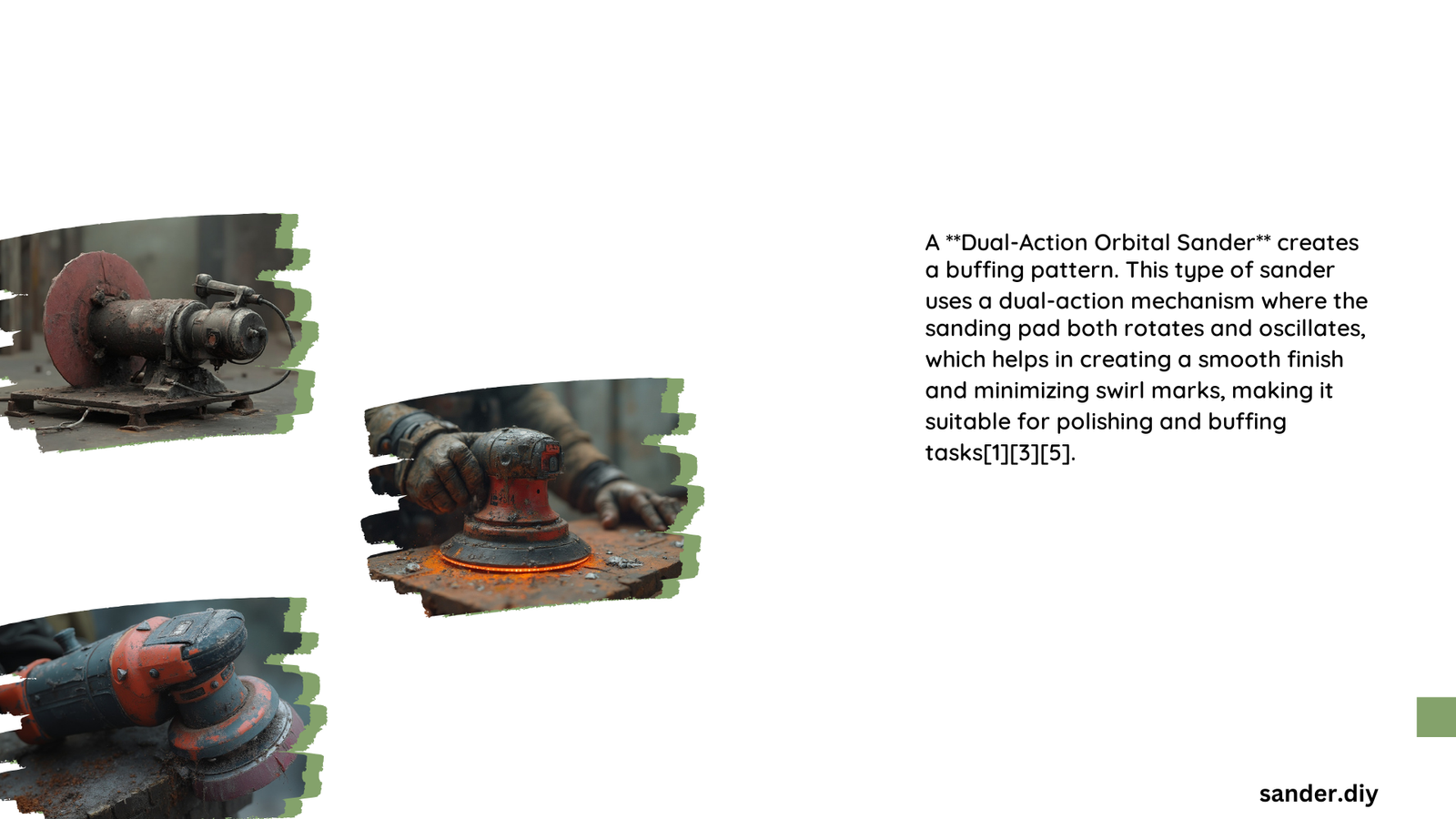When it comes to creating a buffing pattern with an air sander, the key is to use a Dual Action (DA) or Random Orbital Sander. These tools are specifically designed to provide the necessary motion for buffing and polishing. The random orbital motion helps prevent swirl marks and creates a smooth, even finish. This guide will explore the best air sanders for buffing, techniques, and factors that influence the buffing pattern.
What Are the Best Air Sanders for Buffing?
The most effective air sanders for creating a buffing pattern are Dual Action (DA) or Random Orbital Sanders. These tools combine rotational and orbital movements to produce a smooth, swirl-free finish. Here are some top choices:
- 3M Random Orbital Sanders
- Dynabrade Finishing Sanders
- Ingersoll Rand Random Orbital Sanders
What Makes These Sanders Ideal for Buffing?
- Dual Action Movement: Combines rotational and orbital motions
- Adjustable Speed: Typically ranges from 3,000 to 12,000 RPM
- Ergonomic Design: Reduces operator fatigue during extended use
- Compatibility: Works with various pad types for different buffing stages
What Are the Key Specifications for Buffing Air Sanders?

When selecting an air sander for buffing, consider the following specifications:
| Specification | Recommended Range |
|---|---|
| RPM | 7,000 – 12,000 |
| Air Pressure | 90 PSI |
| Pad Size | 3\” – 6\” |
| Orbit Size | 3/16\” – 3/8\” |
Why Is Air Pressure Important?
Maintaining consistent air pressure is crucial for achieving an even buffing pattern. A larger air compressor tank (60-80 gallons) is recommended to ensure steady performance, especially for larger projects.
What Techniques Create the Best Buffing Pattern?
To achieve the optimal buffing pattern with an air sander, follow these techniques:
- Maintain Pad Rotation: Ensure the pad is rotating and oscillating properly to avoid swirl marks.
- Control Air-Line Pressure: Manage the air-line to prevent it from affecting the sander’s angle of contact.
- Use Overlapping Passes: Make slow, overlapping section passes in a front-to-back and side-to-side pattern.
- Apply Consistent Pressure: Use light to moderate pressure, letting the sander’s weight do most of the work.
How Can You Visually Check Pad Rotation?
Tip: Mark the backing plate with a Sharpie to visually confirm proper pad rotation during use.
What Pad Types Affect the Buffing Pattern?
Different pad types can significantly impact the buffing pattern:
- Foam Pads: Ideal for final polishing and high-gloss finishes
- Wool Pads: More aggressive, suitable for cutting and initial polishing
- Microfiber Pads: Versatile for various buffing stages
- Abrasive Pads: Used for initial sanding before polishing
How Do Pad Sizes Influence Buffing?
| Pad Size | Best For |
|---|---|
| 3\” | Detailed work, small areas |
| 5\” | General purpose, medium-sized areas |
| 6\” | Large surfaces, faster coverage |
Choose the pad size based on the project scale and the level of detail required.
What Challenges Might You Face When Buffing with an Air Sander?
While air sanders are excellent for creating buffing patterns, they come with some challenges:
- Air-Line Management: Preventing the air-line from influencing the sander’s movement
- Maintaining Consistent Pad Rotation: Ensuring even buffing without swirl marks
- Air Compressor Capacity: Keeping sufficient air pressure for consistent performance
- Pad Selection: Choosing the right pad for each buffing stage
How Can You Overcome These Challenges?
- Use a swivel air fitting to improve air-line maneuverability
- Regularly check pad rotation and replace worn pads
- Invest in a high-capacity air compressor
- Keep a variety of pad types on hand for different buffing needs
What Safety Precautions Should You Take?
When using an air sander for buffing, always:
- Wear safety glasses and a dust mask
- Use hearing protection
- Ensure proper ventilation in the work area
- Follow the manufacturer’s guidelines for operation and maintenance
By following these guidelines and using the right air sander, you can achieve professional-quality buffing patterns on various surfaces. Remember to practice on a test piece before tackling your main project to perfect your technique and achieve the desired finish.
References:
1. Pneumatic Random Orbital Finishing Sanders – National Abrasives
2. Best Orbital Sander | Auto Geek Online Auto Detailing Forum
3. Auto Body Air Sanders – Auto Body Toolmart
